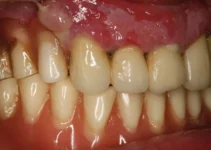AHI, or Apnea-Hypopnea Index, is a critical measure used to diagnose and assess the severity of sleep apnea. This condition, characterized by frequent interruptions in breathing during sleep, significantly affects one’s quality of life and health. A higher AHI indicates a more severe form of sleep apnea, which could require immediate medical attention and varied treatment strategies. Understanding the implications of your AHI score can help in effectively managing sleep apnea and mitigating associated health risks such as cardiovascular problems and excessive daytime fatigue.
What is AHI in Sleep Apnea?
Sleep apnea is a sleep disorder that affects millions of people worldwide, characterized by pauses in breathing or periods of shallow breathing during sleep. One critical metric used in diagnosing and evaluating the severity of sleep apnea is the Apnea-Hypopnea Index (AHI). This index provides a standardized measure of the number of apneas (complete breathing pauses) and hypopneas (partial breathing pauses) a person experiences per hour of sleep. Understanding AHI is essential for both clinicians and patients in managing and treating sleep apnea effectively.
The AHI is not only crucial for diagnosis but also plays a significant role in determining treatment strategies and monitoring the effectiveness of those treatments. A higher AHI score generally indicates more severe sleep apnea, which can lead to a range of health complications if left untreated. Therefore, it’s important to delve deeper into what AHI is, how it is measured, and what different AHI scores indicate about an individual’s sleep health.
Definition of AHI
The Apnea-Hypopnea Index (AHI) is a numerical value that quantifies the severity of sleep apnea by calculating the average number of apneas and hypopneas a person experiences per hour of sleep. This metric is widely accepted and used in both clinical settings and research to classify the severity of sleep apnea.
An apnea is a complete cessation of airflow for at least 10 seconds, while a hypopnea is a partial reduction in airflow that lasts for at least 10 seconds and is accompanied by a drop in blood oxygen levels. Both phenomena disrupt the normal sleep cycle and can lead to fragmented sleep, reduced oxygen levels in the blood, and an array of health issues.
Combining the occurrences of these events, the AHI provides a comprehensive picture of the frequency and intensity of breathing interruptions that a person suffers during sleep. The value is essential for both diagnosis and the ongoing assessment of treatment efficacy.
How AHI is Measured
AHI is typically measured using polysomnography, commonly known as a sleep study. This comprehensive test records multiple physiological parameters during sleep, including brain waves, blood oxygen levels, heart rate, breathing patterns, and eye and leg movements. The data collected is then analyzed to determine the total number of apneas and hypopneas experienced per hour of sleep.
The procedure usually involves spending a night at a sleep clinic, where medical professionals attach sensors to the patient’s body to monitor various functions. While this is the most accurate method, home sleep apnea tests (HSAT) that use fewer sensors and are less comprehensive are also available. These home tests are more convenient and can still provide reliable data for diagnosing sleep apnea.
After the data is collected, specialized software analyzes the information to calculate the AHI. The result helps healthcare providers not only diagnose sleep apnea but also tailor the most appropriate treatment plan based on the severity of the condition.
AHI Score Categories
The AHI is categorized into different severity levels to help clinicians and patients understand the extent of sleep apnea. These categories are as follows:
- Mild Sleep Apnea: AHI of 5 to 15 events per hour. This level indicates that the person experiences relatively few episodes of apnea or hypopnea, but it can still lead to daytime sleepiness and other symptoms.
- Moderate Sleep Apnea: AHI of 15 to 30 events per hour. At this level, the condition is more pronounced, leading to more significant interruptions in sleep and associated health risks.
- Severe Sleep Apnea: AHI of 30 or more events per hour. This level indicates a high frequency of breathing interruptions, which can result in serious health complications if not properly managed.
Understanding these categories is crucial for determining the severity of sleep apnea and choosing the right treatment. Mild cases might be managed with lifestyle changes and positional therapy, while moderate to severe cases often require more intensive interventions like Continuous Positive Airway Pressure (CPAP) therapy.
If you’re interested in learning more about sleep apnea, treatment options, and other related topics, we invite you to explore our other articles. Your journey to better sleep health starts with knowledge!
The Impact of AHI on Sleep Apnea
The Apnea-Hypopnea Index (AHI) is a critical measure used to diagnose the severity of sleep apnea. It quantifies the number of apneas (complete blockages of airflow) and hypopneas (partial blockages of airflow) occurring per hour of sleep. Understanding the impact of AHI on sleep apnea is essential for both patients and healthcare providers, as it directly influences treatment decisions and long-term health outcomes. A high AHI is generally indicative of more severe sleep apnea, which can have significant consequences for an individual’s health and quality of life.
AHI values are typically categorized into three levels: mild (5-15 events per hour), moderate (15-30 events per hour), and severe (over 30 events per hour). Higher AHI scores are correlated with more profound disruptions in sleep and can lead to a cascade of health problems. By recognizing the role of AHI in sleep apnea, patients can better understand their condition and the importance of effective management strategies.
Symptoms Associated with High AHI
Individuals with a high AHI often experience a range of symptoms that can significantly affect their daily lives. Common symptoms associated with elevated AHI include:
- Excessive daytime sleepiness: Frequent awakenings during the night can lead to persistent feelings of fatigue and drowsiness during the day.
- Loud snoring: Snoring that is loud and disruptive is a hallmark symptom of obstructive sleep apnea.
- Morning headaches: Sleep fragmentation and low oxygen levels during sleep can result in headaches upon waking.
- Difficulty concentrating: Poor quality sleep can impair cognitive function, making it hard to focus on tasks.
These symptoms are not only bothersome but can also impair one’s ability to perform daily activities effectively. Recognizing and addressing these symptoms through appropriate treatment can greatly improve a patient’s quality of life.
Health Risks Linked to Elevated AHI
High AHI levels are associated with several significant health risks. Research has shown that untreated sleep apnea can contribute to the development or worsening of a variety of medical conditions. Some of the most notable health risks include:
- Cardiovascular diseases: Repeated drops in blood oxygen levels and increased blood pressure during apneas and hypopneas strain the heart, increasing the risk of hypertension, heart attacks, and stroke.
- Metabolic disorders: There is a strong link between sleep apnea and metabolic issues such as obesity and diabetes. Poor sleep can lead to weight gain and insulin resistance.
- Mental health concerns: People with high AHI are more prone to depression and anxiety due to the chronic stress and poor sleep quality associated with sleep apnea.
Addressing sleep apnea through interventions such as Continuous Positive Airway Pressure (CPAP) therapy can mitigate these risks and promote better overall health. It is crucial for individuals with high AHI levels to seek treatment to prevent these serious health consequences.
Daily Life and High AHI
Living with a high AHI can have a profound impact on daily life. The chronic sleep disruption caused by frequent apneas and hypopneas can lead to a host of difficulties, including:
- Impaired work performance: Sleep apnea sufferers often struggle with decreased productivity and increased risks of workplace accidents due to their impaired cognitive function and daytime sleepiness.
- Strained relationships: Loud snoring and frequent nighttime awakenings may disturb a bed partner’s sleep, leading to tension and conflict.
- Decreased quality of life: Persistent fatigue and health complications from high AHI can diminish overall life satisfaction and enjoyment.
To manage these challenges, it is important for individuals with high AHI levels to adhere to their prescribed treatment plans, which may include lifestyle changes, CPAP therapy, or other medical interventions. By effectively managing sleep apnea, individuals can greatly enhance their daily functioning and overall well-being.
For more in-depth information and additional resources on managing sleep apnea and its associated risks, we encourage you to explore our other articles on the topic. Taking proactive steps to understand and treat sleep apnea can lead to a healthier and more fulfilling life.
Managing AHI in Sleep Apnea
Managing the Apnea-Hypopnea Index (AHI) is crucial for individuals suffering from sleep apnea. AHI represents the number of apneas (pauses in breathing) and hypopneas (shallow breathing) per hour of sleep. A lower AHI signifies better control over sleep apnea, reducing associated health risks. Various approaches can help manage and reduce AHI, including lifestyle changes, medical treatments, and long-term strategies.
Understanding the importance of managing AHI can lead to better health outcomes and improved quality of life. This article explores different methods to control AHI effectively, focusing on lifestyle changes, medical treatments, and long-term management strategies. By employing these methods, individuals can significantly improve their sleep quality and overall health.
Lifestyle Changes and AHI
One of the most effective ways to manage AHI is through lifestyle changes. These changes can include weight loss, exercise, and altering sleep positions. Weight loss is particularly beneficial for overweight individuals, as excess weight can exacerbate sleep apnea symptoms. Studies have shown that even a modest reduction in weight can lead to a significant decrease in AHI.
Regular exercise is another crucial factor. Exercise helps maintain a healthy weight and improves muscle tone, including the muscles involved in breathing. Increased muscle tone in the respiratory system can reduce the frequency and severity of apnea events, subsequently lowering AHI.
Adjusting sleep positions is also essential. Sleeping on one’s back can cause the tongue and soft tissues to collapse to the back of the throat, leading to blocked airways. Many people find that sleeping on their side or using specially designed pillows can help keep airways open and reduce AHI.
Medical Treatments to Lower AHI
For individuals whose sleep apnea is not sufficiently managed through lifestyle changes, medical treatments can be incredibly effective. Continuous Positive Airway Pressure (CPAP) is one of the most common and effective treatments for reducing AHI. CPAP devices keep airways open by providing a steady stream of air through a mask worn during sleep.
Another option is oral appliance therapy. These devices are designed to keep the throat open by bringing the jaw forward. This can be particularly useful for individuals with mild to moderate sleep apnea. Custom-fitted by a dentist or orthodontist, these appliances can significantly reduce AHI.
Surgical options may also be considered in severe cases. Procedures such as uvulopalatopharyngoplasty (UPPP), maxillomandibular advancement (MMA), and the insertion of hypoglossal nerve stimulation devices can help by removing tissue or repositioning anatomical structures to keep airways open. These treatments are usually reserved for individuals who do not respond well to CPAP or oral appliances.
Long-term AHI Management Strategies
Long-term management of AHI requires ongoing monitoring and adjustments to treatments and lifestyle. Regular follow-ups with healthcare providers are necessary to ensure that the chosen treatment continues to be effective. This also allows for adjustments to be made as needed based on changes in weight, lifestyle, or other health conditions.
Engaging in a healthy lifestyle is crucial for maintaining low AHI levels over the long term. This includes not only regular exercise and maintaining a healthy weight but also avoiding substances that can exacerbate sleep apnea. For instance, alcohol and sedatives relax throat muscles, making sleep apnea worse.
Technology offers various solutions for long-term management. Telemedicine and remote monitoring systems can help track AHI and other vital sleep parameters. These technologies can alert healthcare providers to any worsening of symptoms, allowing for timely intervention and adjustments to treatment plans.
By incorporating these strategies, individuals can effectively manage their AHI over the long term, improving not only their sleep quality but also their overall health. Continuous adaptation and vigilance are key to successfully managing sleep apnea.
Interested in learning more about sleep health and related treatments? Explore our other articles for more in-depth information and tips.
Monitoring and Adjusting AHI
Apnea-Hypopnea Index (AHI) is a crucial metric used to evaluate the severity of sleep apnea. Monitoring and adjusting AHI is essential for effective treatment and long-term management. Advances in technology have introduced new home monitoring techniques that allow patients to track their AHI with greater precision and convenience. Understanding when to consult healthcare providers is also pivotal in ensuring that the condition is adequately managed and that interventions are timely.
Effective management of sleep apnea requires continuous monitoring and adjustments. As patients’ conditions evolve, so too must their treatment plans. Regular adjustments based on AHI readings help to ensure that the therapy remains optimal and that the patient’s quality of life is maintained or improved. Both patients and healthcare providers play crucial roles in this ongoing process.
Home Monitoring Techniques
Recent advancements in wearable technology have made home monitoring of AHI more accessible than ever. Many devices now offer the ability to track sleep patterns, breathing irregularities, and other vital signs. This data is crucial for making real-time adjustments to treatment plans. Smartwatches and other wearables can send alerts if AHI reaches concerning levels, enabling prompt action. Moreover, several home monitoring systems are designed to integrate with Continuous Positive Airway Pressure (CPAP) machines. These systems provide detailed reports on AHI and other metrics directly to healthcare providers, allowing for remote monitoring and adjustments. This integration enhances the ability to maintain effective sleep apnea treatment without frequent office visits.
Home monitoring can be particularly useful for patients in rural or underserved areas where access to specialist care may be limited. Telemedicine platforms can provide a bridge between home data collection and professional medical advice. Patients can share their data electronically and receive feedback and adjustments remotely, ensuring continuous and effective management.
However, it is essential to remember that while home monitoring can provide valuable insights, it does not replace professional medical evaluations. The data collected should always be reviewed by a qualified healthcare provider to ensure its accuracy and to make informed decisions about adjustments to the treatment plan.
When to Consult Healthcare Providers
It is crucial for patients to understand when to escalate their concerns to healthcare providers. Significant changes in AHI readings, especially those that indicate worsening symptoms, should prompt an immediate consultation. If patients experience new or worsening symptoms such as increased daytime sleepiness, morning headaches, or loud snoring, it is advisable to seek professional advice.
Patients should also consult healthcare providers for routine follow-ups even when AHI readings seem stable. Regular check-ups can help in identifying subtle changes that might not be immediately apparent through home monitoring. During these visits, providers can adjust CPAP settings, review lifestyle changes, and ensure that the device is functioning correctly.
For those undergoing treatment modifications, such as weight loss or surgery, more frequent consultations may be necessary. These interventions can significantly impact AHI, and regular monitoring by healthcare providers ensures that any benefits or complications are promptly addressed. Post-surgical monitoring is especially important to track recovery and effectiveness.
In conclusion, effective management of AHI involves a combination of home monitoring techniques and regular consultations with healthcare providers. This dual approach ensures that patients receive timely adjustments to their treatment plans, leading to better outcomes and improved quality of life. For more information on sleep apnea management, explore our other articles that delve into various aspects of diagnosis, treatment, and lifestyle adjustments.
Common Questions on AHI and Sleep Apnea
If you’re trying to understand more about Apnea-Hypopnea Index (AHI) and its role in sleep apnea, here are some frequent inquiries that might help clear up common confusions and concerns.
What is AHI and why is it important in diagnosing sleep apnea?
AHI stands for Apnea-Hypopnea Index, which is a diagnostic tool used to assess the severity of sleep apnea. It measures the number of apnea and hypopnea events per hour of sleep. Understanding your AHI is crucial because it helps determine the severity of your condition—mild, moderate, or severe—and guides the appropriate treatment approach. A higher AHI indicates more disruptions in sleep, leading to potential health risks if not properly managed.

My name is Salman Kapa, a 73-year-old expert in bone regeneration and dental implantology. With decades of experience in the field, I am dedicated to advancing our understanding of oral health and hygiene. Through my research and writing, I aim to contribute to the development of innovative solutions in dental care.




